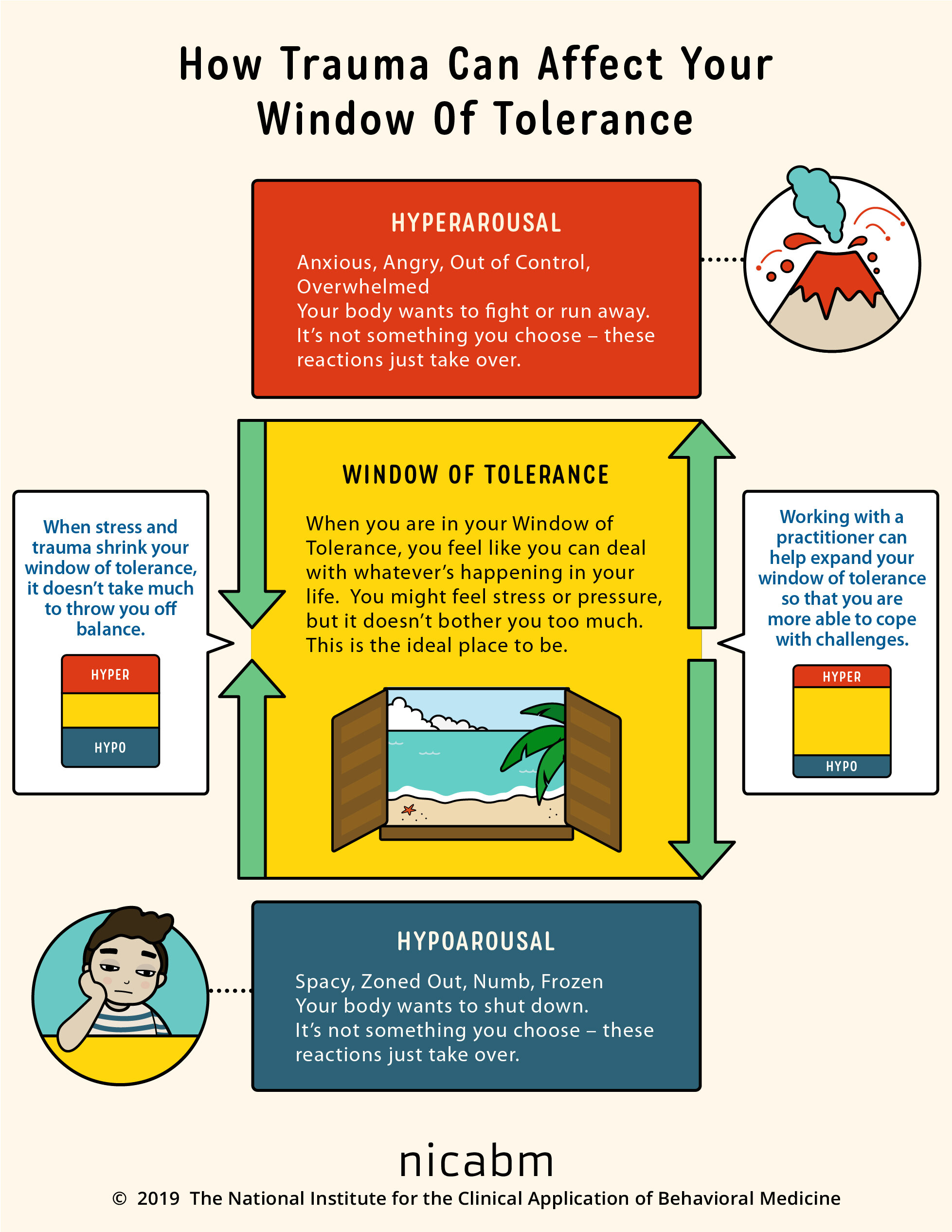In Part 1, we discussed how trauma responses are intense physical and emotional sensations that seem to come out of nowhere, but are often related to a trigger of a past traumatic experience. They can be confusing and bewildering, causing a fight-flight-freeze response to arise. They toss you out of your window of tolerance and lead you to feel uncertain about how to respond.
The first and most important step covered was how to respond to the initial impact of the trauma response. Calming your body’s reaction to the trauma needs to happen before you can engage in critical thinking about what led to the response and how to address it more adequately in the future. Detailed in more depth in Part 1, these calming techniques included:
Breathing and grounding strategies to calm the nervous system
Coping thoughts to remind yourself of distance from the traumatic experience
Distraction techniques to focus your mind elsewhere until the intensity of the emotional response recedes
Now, we’ll get into more depth on how to approach your trauma response with curiosity instead of criticism and learn more about yourself and your needs through this exploration.
Identify the traumatic event that triggered your response.
In some cases, it is easy to connect a past traumatic event with a current trigger. An experience in combat, a spouse’s betrayal, or physical abuse from a caregiver are all examples of experiences that may resurface in a flashback.
With other experiences, it’s more challenging to identify the trigger or what might be intensifying the experience. As an EMDR practitioner, I often prompt my clients to connect the dots by identifying the emotion they’re feeling, where it is located in their body, and any thoughts associated with that feeling. Then, I ask them to let their mind go back to other experiences in their life where they’ve had a similar response.
Sometimes, what comes out of that exercise may feel unrelated to the trigger, but let your mind make those connections and be curious about what it finds. The purpose of this exercise is to validate your experience and help you understand that you’re not crazy: this is a trauma response. If you notice this experience brings up even more emotional intensity, mitigate it with some of the self-soothing, coping thoughts, or breathing practices discussed earlier.
Ask yourself what you needed then.
Once you recognize the event that triggered the negative reaction, you can then reflect on what needs might have gone unmet or what threats were occurring that left you feeling unsafe. For example, in an abuse situation, the need may have been for protection or escape. In a major car accident, safety and help may have been the primary needs. For a betrayed partner, empathy and connection may be needs they’ve experienced when dealing with addiction.
It may take some digging to get at the core needs you feel here. Often, they aren’t right at the surface. It may help to take a look at your reaction to the trauma: if your immediate response to a harsh word or anger from your spouse is to run and hide, this might indicate the escape you needed from an abusive family member. Once you’re aware of these needs, then you can more easily bring them into the present moment.
Seek healthy ways to get your needs met.
In some situations, you can easily get your needs met. For example, if your traumatic experience relates to living with an abuser in the past or a combat experience that occurred several years ago, you can remind yourself that you are no longer in that situation, it is over, and you are safe in this moment now. This can help increase a sense of safety. Grounding strategies work well at supporting this need, to bring you into awareness of the present moment and connect you to that sense of present-moment safety.
In other situations, there might be a few more steps you need to take to receive support for your needs. Perhaps you’re still living in the place of trauma, as when your spouse is a recovering addict and you can’t lean on them for support or trust. You may have had a traumatic experience at work, but you aren’t able to quit or leave your job, and so you feel anxiety or stress each time you walk through the door into your office.
When you can’t immediately talk yourself down from a lack of safety, consider opportunities to meet your needs in healthy ways. For the betrayed partner, seek out a therapy or support group or helpful, understanding friends with whom you can talk to receive empathy. Practice self-validation of your experience and acknowledge to yourself that it makes sense why you would feel unsafe. Set boundaries in your workplace or in your relationships to meet needs for protection and security.
Consider trauma-based therapy with a trained counselor.
The strategies listed above and in the previous post can help in some situations, but if you notice your trauma triggers aren’t going away, it may be time to consider more formal therapy to address some of the trauma. EMDR is a method of psychotherapy that directly addresses and reprocesses traumatic events so that they don’t continue to hang around in your mind and plague you with intense triggers and flashbacks. Good trauma counseling can help you create deeper change to see lasting resolution from the traumatic memories.






